Continuous Security
in the DevOps world
Julien Vehent
Mozilla Security
tip: navigate with left/right arrows
$whoami
|

|
@jvehent on twitter
This talk is about
DevOps
and
Security
It's about avoiding this
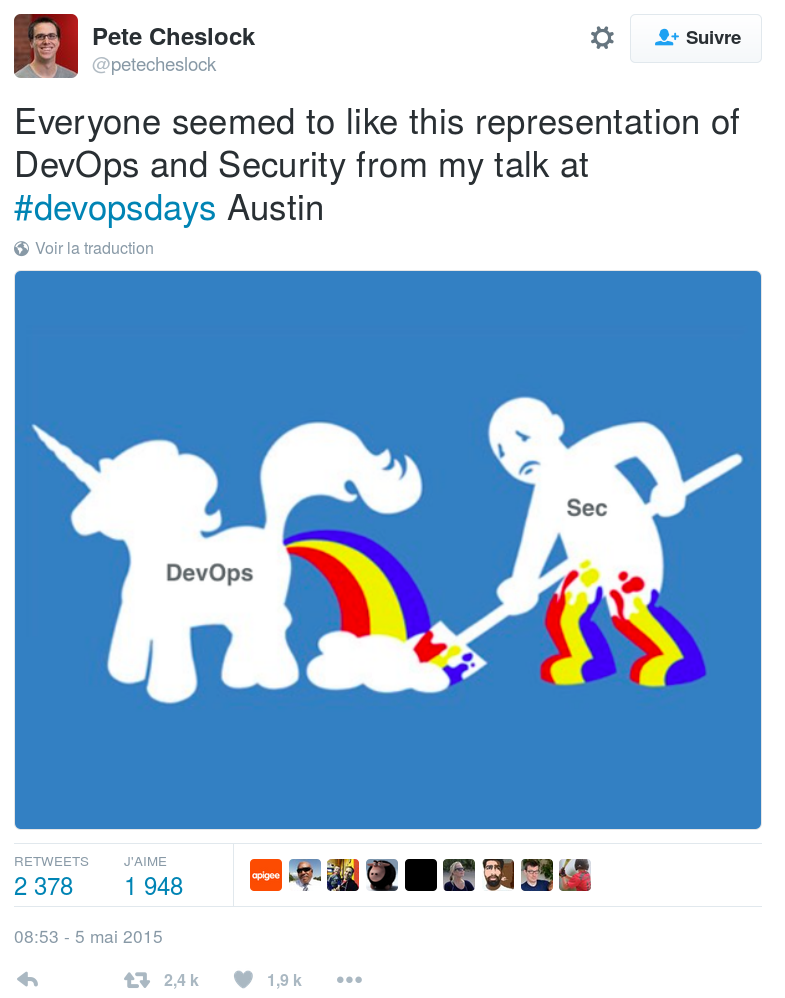
Meet Samantha
She's a Full Stack developer
Sam used to work @slowcorp
She didn't like it much
- Internal private repos
- Manual deployment by ops, would take weeks
- Different platform between dev & prod
- No access to cool tools everyone else uses
Speed matters
Traditional ops where deployments take entire weeks
aren't acceptable anymore.
To compete, startups need fast release cycles.
15min from patch to prod is the new standard!
Sam now works at Mozilla
She gets to use all the cool stuff!
What's the cool stuff
- Code in public Github repo
- Circle/Travis CI to run tests
- Docker to build and deploy applications
- Continuous Deployment via Jenkins in AWS
- Logs in Kibana, monitoring in Datadog

In an ideal world, all deploys are automated and instantaneous
in the real world, we're not quite there yet, but you get the point
Security versus DevOps
aka. The Wrong way
- DevOps team optimizes for fast iterations
- Security team optimizes for fewer incidents
Both sides typically work against each other, actively arming both the roadmap and security of the product
Security into DevOps
- Test Driven Security (TDS) integrated into the delivery pipeline. Use security tests to gradual improve application & infrastructure security.
- Monitoring & blocking attacks, via fraud detection techniques and incident response.
- Managing risks throughout the life-cycle of the service.
Continuous Security at Mozilla
Walkthrough through the life-cycle of a project, from inception to retirement
Sam is building a new service
CuteFox: a REST API that sends webpush notifications to Firefox users with photos of cute foxes.

When the project starts,
we talk risk together
RRA: Rapid Risk Assessment
A ~30min friendly discussion between the devs, ops, products managers and security team to go over the business risks of the project
done remotely!
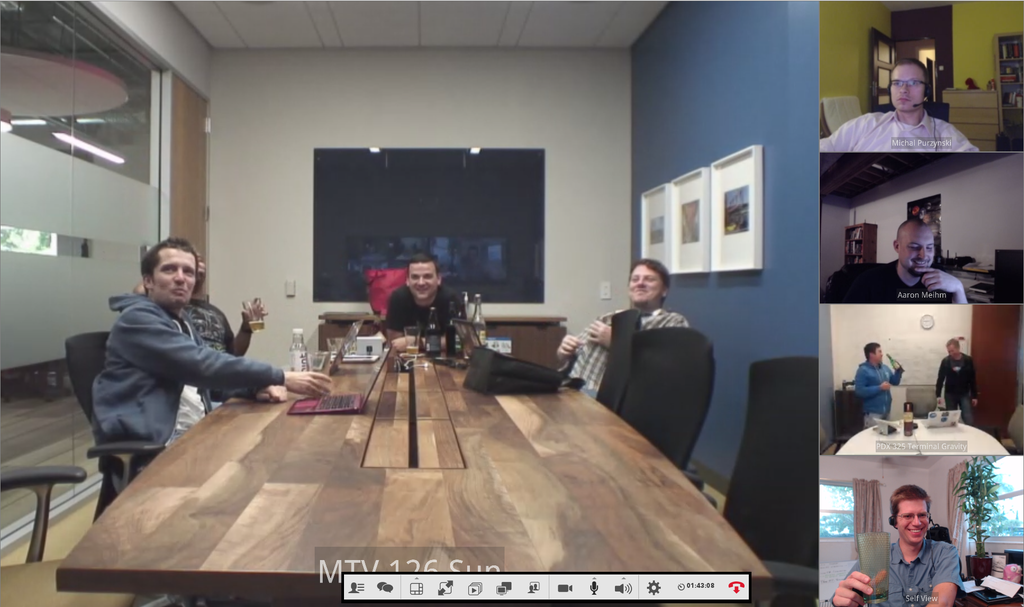
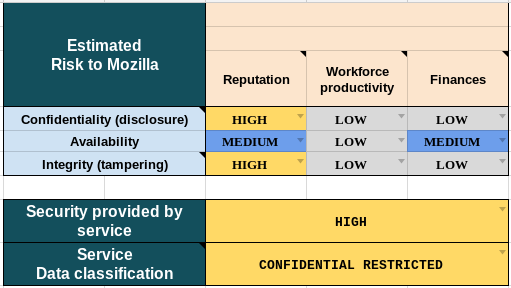
A risk summary table from the RRA
RRA outputs recommendations
We capture those recommendation into a "Risk Summary" bug. The bug stays open for the lifetime of the service and serves as a tracker for security discussions related to the project
The project team understands the risks their project is exposed to.
Sam goes coding
We help Sam avoid
common webapp vulnerabilities
- Mozilla Web Security Guidelines
wiki.mozilla.org/Security/Guidelines/Web_Security - OWASP ZAP Scanning
github.com/zaproxy/ZAP-Baseline-Scan - Require baseline security on all websites (CSP, Secure Cookies, TLS Only, ...)
Test Driven Security for web applications
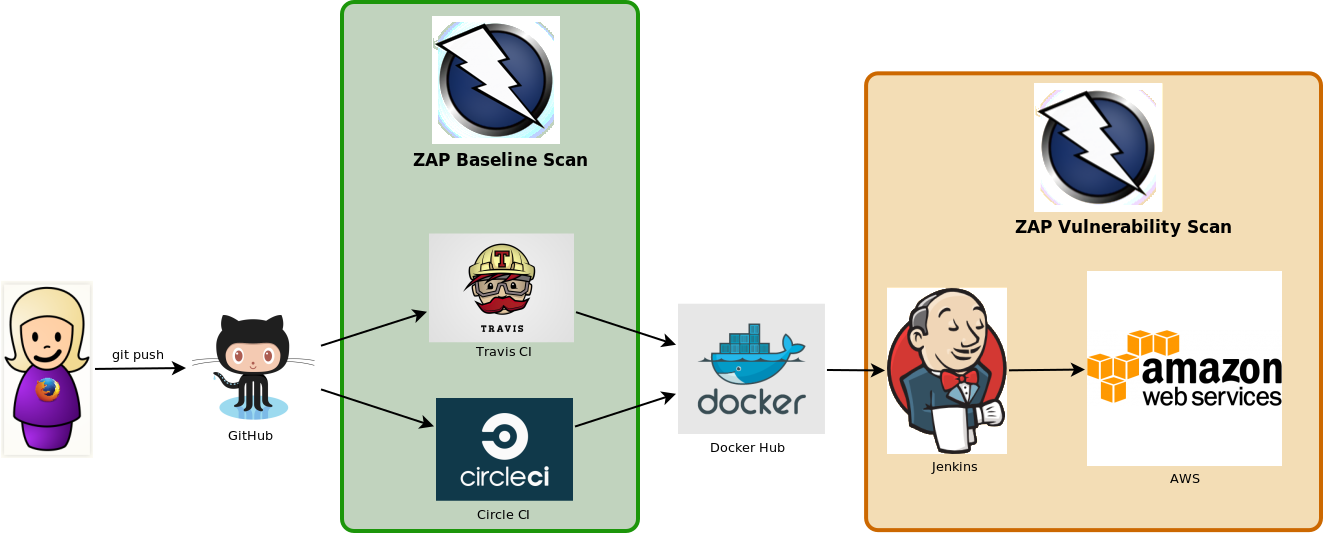
ZAP example in CircleCI
test:
override:
- docker run mozilla/cutefox &
# pull down the ZAP docker container
- docker pull owasp/zap2docker-weekly
# Run ZAP against the application
- >
docker run -t owasp/zap2docker-weekly zap-baseline.py
-t http://172.17.0.2:8080/
# Shut down the application container
- >
docker kill
$(docker ps |grep mozilla/cutefox
| awk '{print $1}')
Pass/Fail output, like unit tests
PASS: Absence of Anti-CSRF Tokens [40014]
WARN: Web Browser XSS Protection Not Enabled [10016] x 3
http://172.17.0.2:8080/
http://172.17.0.2:8080//robots.txt
http://172.17.0.2:8080//sitemap.xml
Test Driven Security
Similar to TDD: Write the security tests first, let them fail, implement the security control then verify the tests pass
- Security team writes the tests
- Developers implement the controls
We also ask Sam to
keep her app up to date
- Node.JS: NSP, Greenkeeper.io
- Python: requires.io, pip --outdated
- Go: govend
TDS for dependency management
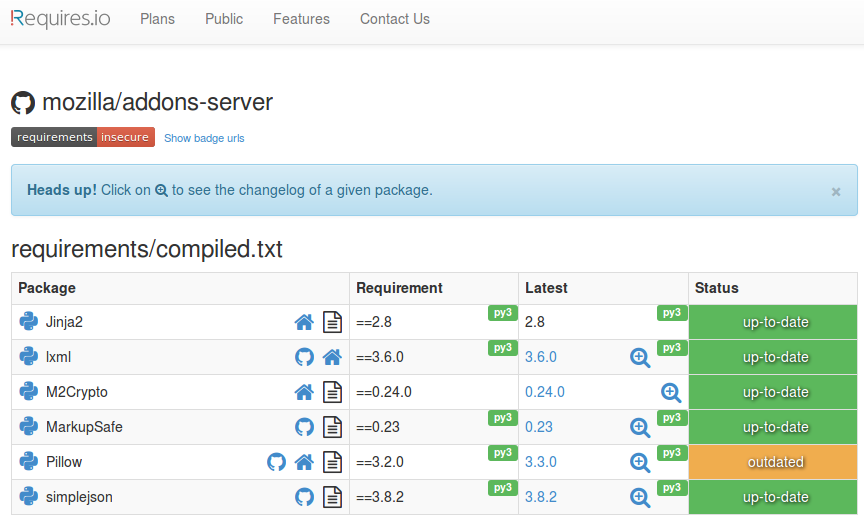
Developers own the operational security of their application
We don't bolt it on top with WAFs and so on, we build security into the app directly
Then we deploy
Meet Max
He's the Ops guy
Max has to write all the provisioning code
- Build the AWS infra via cloudformation
- Setup the jenkins pipeline to for continuous deployment (Docker container deployed to EC2 instances with Jenkins, Ansible, Cloudformation and Puppet).
- He often helps the devs make architecture decisions, like how to use CDNs, caching, etc...

We help Max with tools...
- Managing secrets (SOPS) to prevent leaks
- Configuring good TLS on endpoints (TLS Observatory)
- Disabling users that have left the company (Userplex)
- Building crypto services so services don't have to manage keys (Autograph)
and Guidelines
- Require that admin panel must be placed behind VPN
- Perform audits and incident response training with the teams
etc...
Sec team builds solutions
to help DevOps
- Dev or Ops come see us with a problem
- We discuss it together
- Sec or Dev team builds a solution that solve the issue
- We generalize it so other teams can benefit as well
Example: storing secrets in git
Problem: secrets in cleartext files have a bad tendency to leak
Solution: SOPS - encrypt all credentials, decrypt at provisioning
# The secrets below are unreadable without access to one of the sops master key
myapp1: ENC[AES256_GCM,data:QsGJGjvQOpoVCIlrYTcOQEfQzriw,iv:ShmgdRNV6UrOJ22Rgr7habB74Nd/YFxU4lDh6jy6n+8=,tag:8GT6U8lzrI27DcFc1+icgQ==,type:str]
app2:
db:
user: ENC[AES256_GCM,data:Arbb,iv:7bjm4ZaVFlxNk3O4M1P67TqfFtXTOHOe5x9rjF6/R9o=,tag:d4+O8BUj+02qaeJorev2ww==,type:str]
password: ENC[AES256_GCM,data:9/jSxNCq0A==,iv:5mk+GS016hKGj6gVfQDMSyuuPy7/SVHLsqQXK3p1nds=,tag:AtK4nPFoSOOgdw6IZmiZmw==,type:str]
Test Driven Security for the infrastructure
- Test the TLS configuration daily (certificate, ciphersuites, ...)
- [future] Test security groups with mozilla/build-fwunit
- [future] Test AWS IAM policies
Example: Testing TLS configuration
$ tlsobs addons.mozilla.org
[...]
--- Analyzers ---
* Mozilla evaluation: intermediate
- for modern level: remove ciphersuites ECDHE-RSA-AES128-SHA, ECDHE-RSA-AES256-SHA, AES128-GCM-SHA256, AES128-SHA256, AES128-SHA, AES256-GCM-SHA384, AES256-SHA256, AES256-SHA, DES-CBC3-SHA
- for modern level: consider adding ciphers ECDHE-ECDSA-AES256-GCM-SHA384, ECDHE-ECDSA-CHACHA20-POLY1305, ECDHE-RSA-CHACHA20-POLY1305, ECDHE-ECDSA-AES128-GCM-SHA256, ECDHE-ECDSA-AES256-SHA384, ECDHE-ECDSA-AES128-SHA256
- for modern level: remove protocols TLSv1, TLSv1.1
- for modern level: consider enabling OCSP stapling
- for modern level: use a certificate of type ecdsa, not RSA
- oldest clients: Firefox 1, Chrome 1, IE 7, Opera 5, Safari 1, Windows XP IE8, Android 2.3, Java 7
When TLS config test fails, we direct ops to the config generator
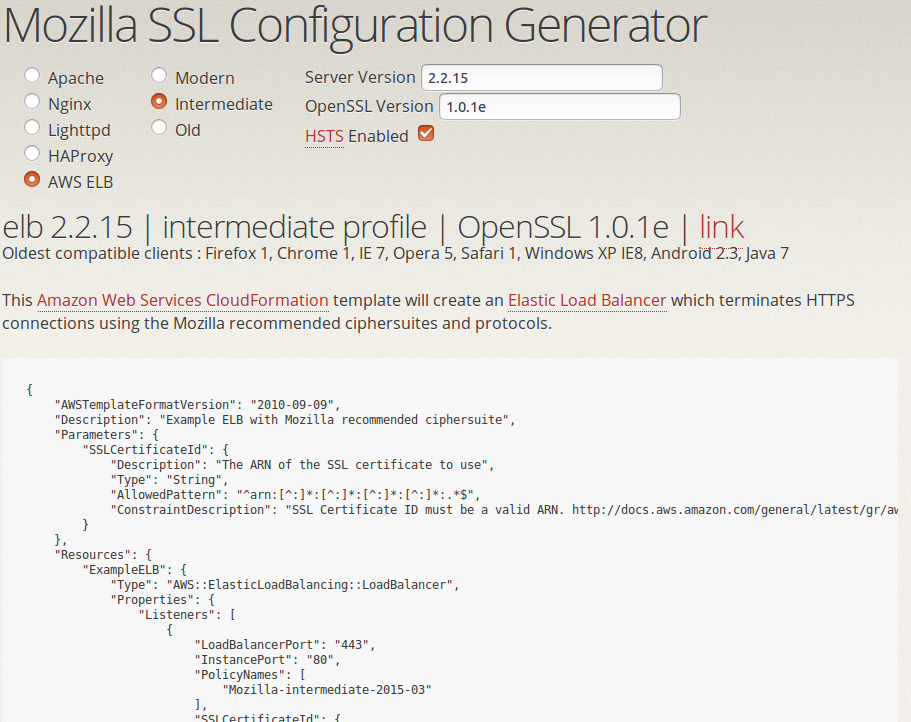
It's launch day! Foxes Everywhere!

Until bad guys start attacking CuteFox

Incident Response
No one in the DevOps team sleeps until the fire is out

Incidents suck
but they are great for
- Team building: Nothing like going through hell together to build trust!
- Roadmaps: Incidents always bump up the priority of security features.
- Security maturity: no amount of testing compares to an incident to evaluate the reliability of a service.
Continuous Security is a cycle
- design new feature
- assess risks
- implement feature
- test security
- deploy
- get attacked
- fight back
- learn
- rinse and repeat
Security must be part of the Product
Not an afterthought built on top
- Be a member of the DevOps team
- Understand the roadmap
- Share the successes
- Share the failures
- Write code that makes things better
It's not SecDevOps, it's just DevOps.
Security is a natural component of it.
Thank You

jvehent.github.io/continuous-security-talk